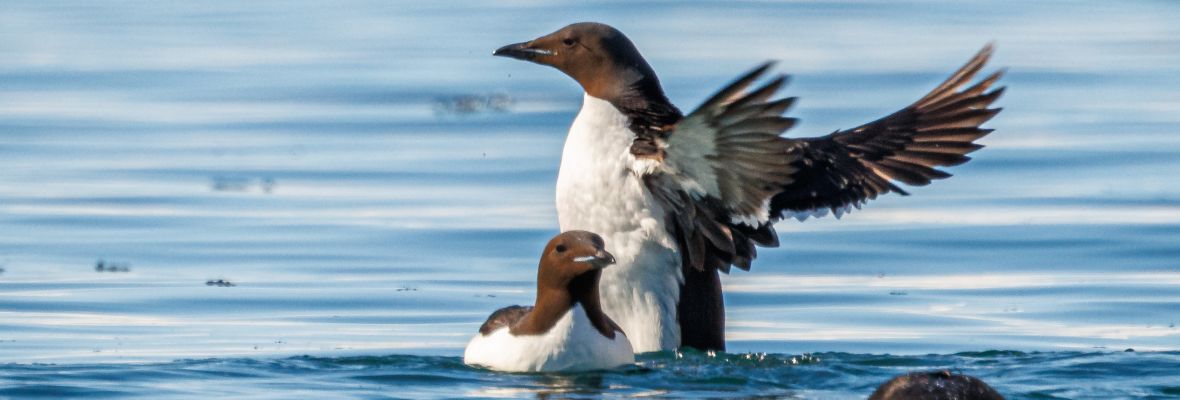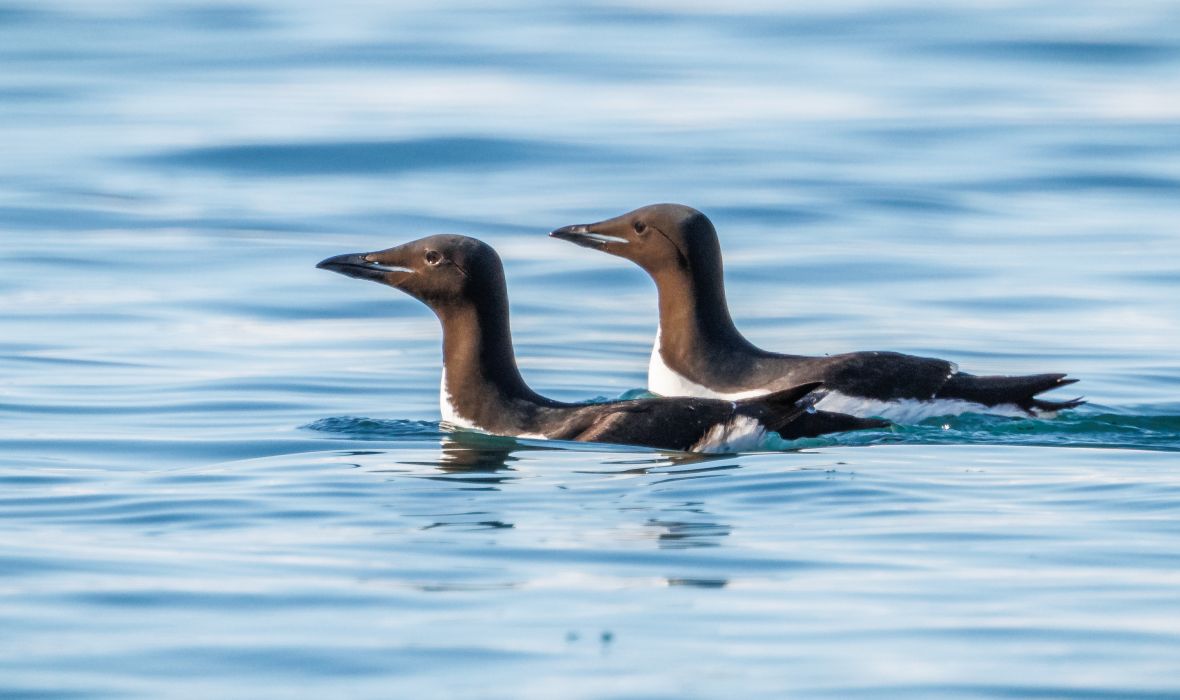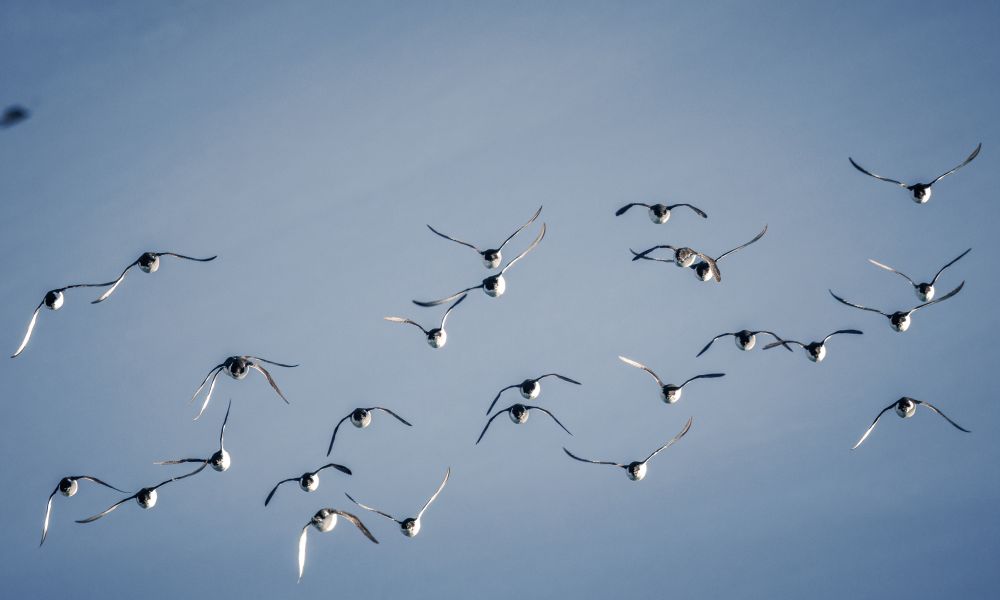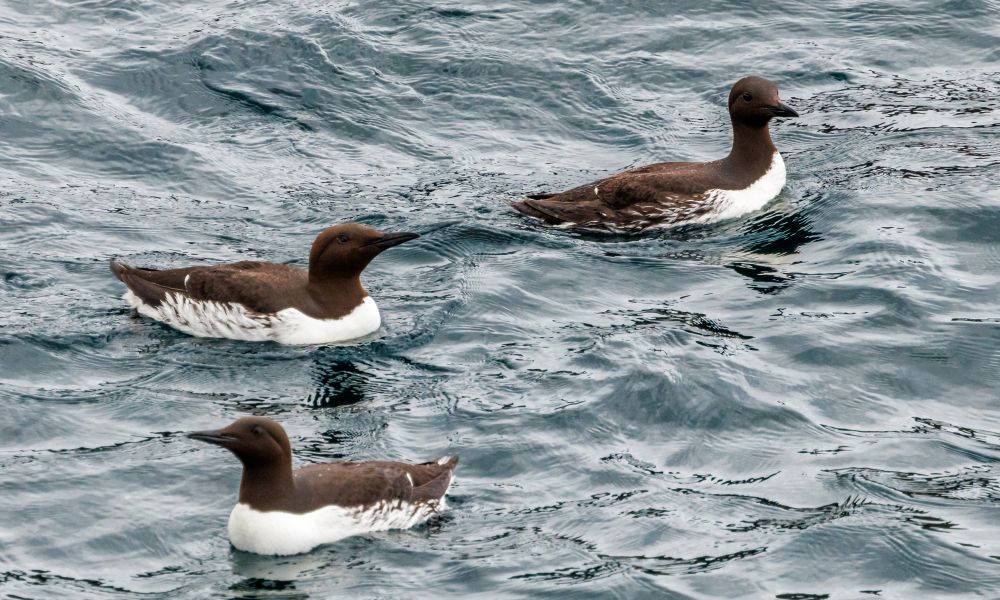Common Guillemot Fact #1:
Northern ocean cliffs are the usual Common Murre habitat.
Common Guillemot Fact #2:
Common Murre predators include gulls and foxes, particularly during the nesting season.
Common Guillemot Fact #3:
An alternative name for the Common Murre is the Common Guillemot, especially in Europe.
Common Guillemot Fact #4:
A Common Murre egg is pear-shaped and has many different colour variations, including white, brown, pale blue, and shades from light to dark green.
Common Guillemot Fact #5:
The common murre population is about 18 million worldwide.
Common Guillemot Fact #6:
A Common Murre egg size averages about 3.5 inches (9 cm) in length.
Common Guillemot Fact #7:
Common Murre winter plumage features a white face and throat, replacing the dark head they wear in summer.
Common Guillemot Fact #8:
The Common Murre diet mainly consists of small fish such as herring and capelin.
Common Guillemot Fact #9:
A Common Murre baby leaps off the cliff shortly after hatching—long before it can fly!
Common Guillemot Fact #10:
The Common Murre has a lifespan of about 20 years in the wild.
Join on an Arctic adventure with Albatros Expeditions and witness the wonders of Arctic wildlife!






